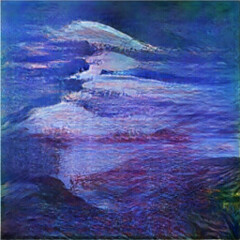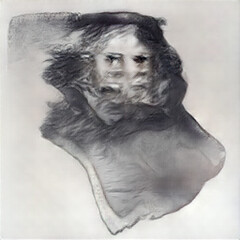Creativity is a cornerstone of human intelligence and perhaps its most complex aspect. It is thus interesting to many to see how AI can assist in creative domains such as fashion design and art. Consequently, this makes the current need for creativity quantification a pressing matter. In this work, we make a first step into a systematic evaluation of creativity in human and AI-generated artworks, based on human responses.
When we are making art with a machine, we need to consider why human art is made. When evaluating machine-generated artwork, we believe that it is crucial to involve professional artists.
These art pieces were generated by a Generative Adversarial Network model trained on the WikiArt dataset [1], but using a loss function which encourages creative, novel output images. The model we used is based off of the Creative Adversarial Network [2].
As part of our research evaluation, we conducted a survey consisting half of our network’s generated art, and half of human art from the wikiart dataset and the contemporary art basel movement. [3]We sought out both professional artists and machine-learning practitioners for their responses. We had them each rate how much they liked each image, as well as guess whether the artwork was created by a human or by a machine.
These 4 GAN-generated artworks are the ones that were the most pleasing to professional artists. We titled them ourselves afterward.
[1] wikiart.org [2] “CAN: Creative Adversarial Networks Generating “Art” by Learning About Styles and Deviating from Style Norms”. https://arxiv.org/pdf/1706.07068.pdf [3] https://www.artbasel.com/



